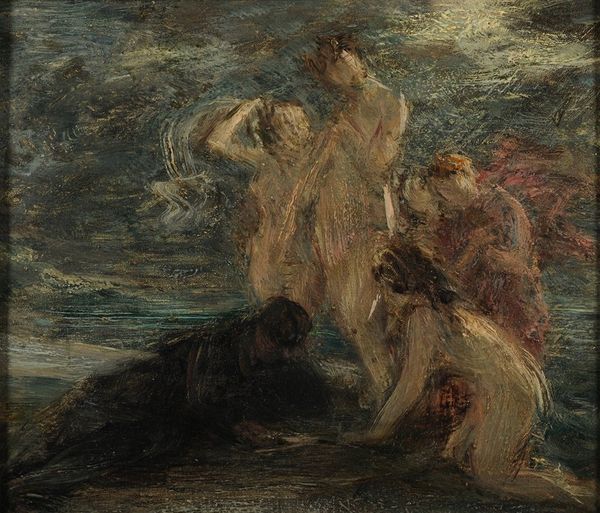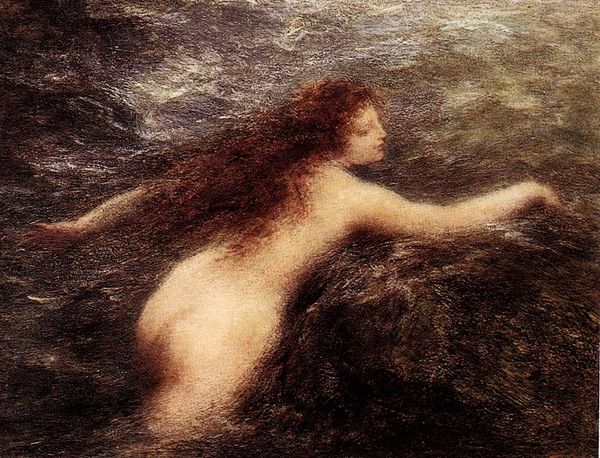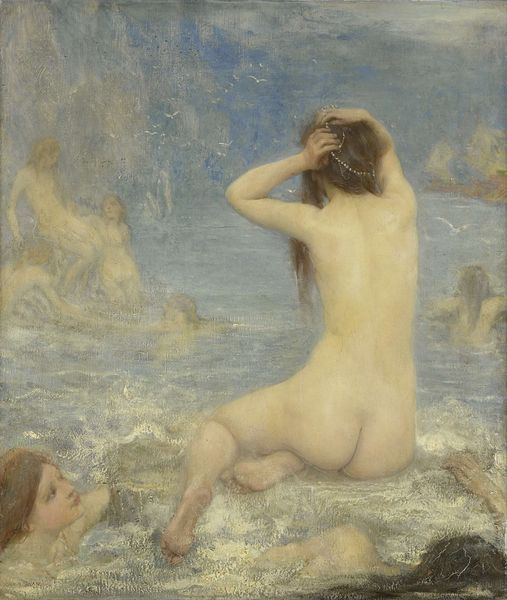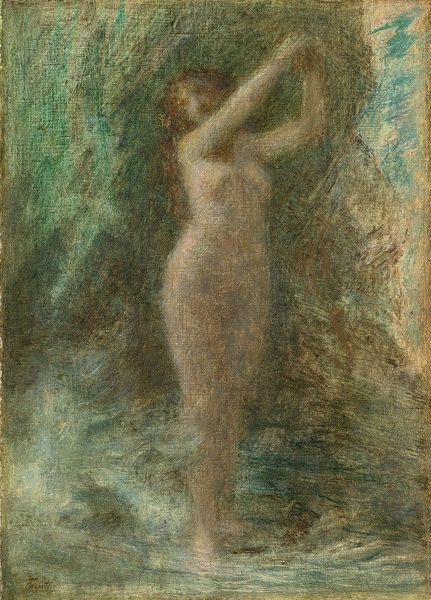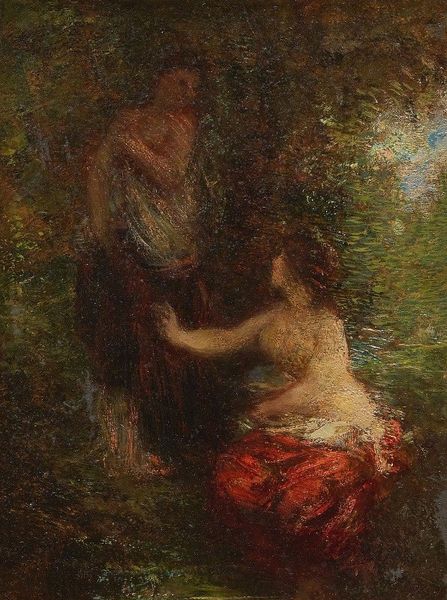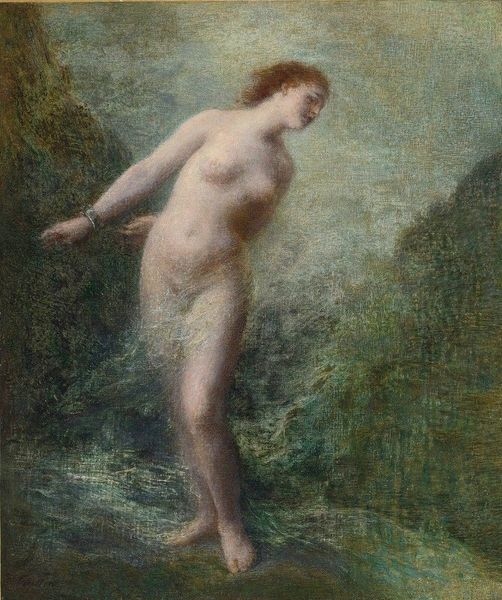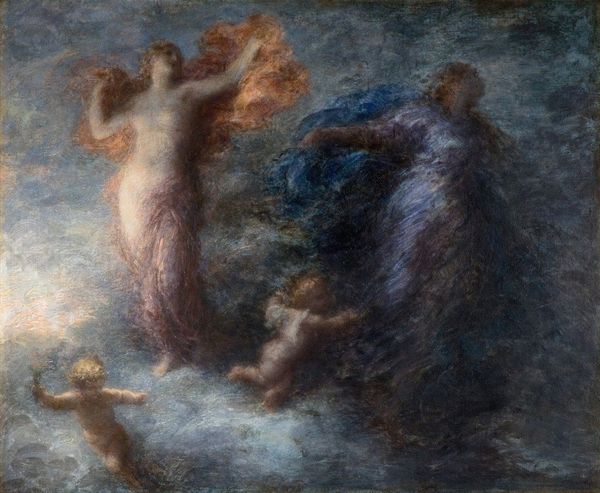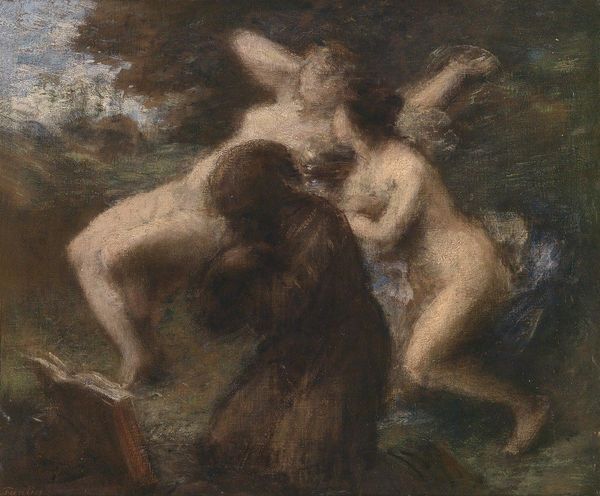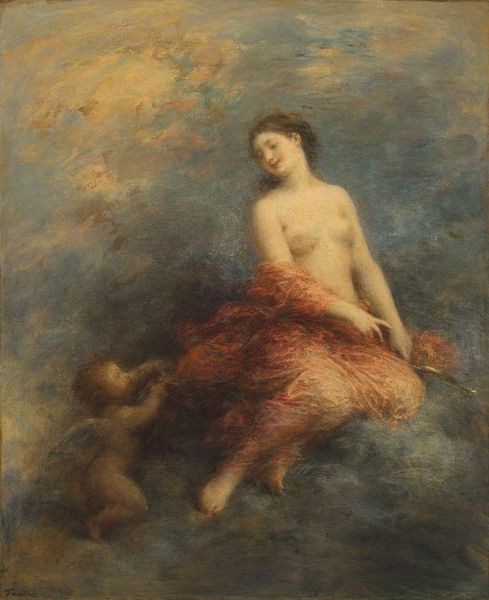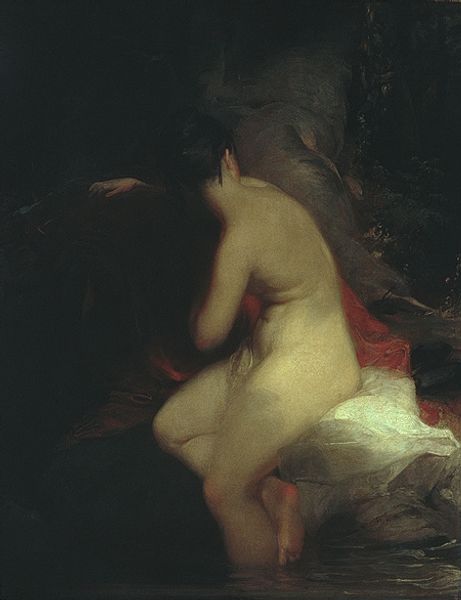
painting, oil-paint
#
painting
#
oil-paint
#
landscape
#
charcoal drawing
#
figuration
#
possibly oil pastel
#
oil painting
#
underpainting
#
romanticism
#
mythology
#
painting painterly
#
nude
Copyright: Public Domain: Artvee
Curator: What an enchanting piece! Henri Fantin-Latour's oil painting, titled "Ondine Or La Mer Or Nymphe," immediately casts a spell, doesn't it? The way the figure emerges from the water is almost dreamlike. Editor: Yes, there is something incredibly seductive about it. I am drawn to the interplay of dark and light—but also by the way that this nymph is positioned at the center of the artwork and seems almost oblivious to our gaze. Curator: Oblivious is a good word for it, totally unconcerned! The artist leaves a lot open to our interpretation; we can almost hear the rushing water around her. There's something elemental about the brushstrokes and color choices. Do you sense an emotional connection, or am I projecting my own stuff onto the canvas again? Editor: Not at all! There is, or course, the history of Romanticism here – we see a clear link to that movement. Figures of women are used often to mirror an individual’s engagement with a powerful landscape. It feels very much of its time in terms of aestheticising ideas around nature, womanhood, and escapism. Curator: Hmm, aestheticizing... Isn’t it also so human, so intimate? Almost voyeuristic to observe her like this! Like, this woman is right at home, totally liberated and connected. I get this feeling from her! Editor: That is an interesting response because, to me, it seems much less about celebrating the female form as much as about leveraging that form to express a certain sensibility linked with natural wonder. You know, this positioning also plays into centuries of gendered tropes linking women with water—evoking ideas about fluidity, depth, and inscrutability. Curator: Yeah! Fantin-Latour leaves breadcrumbs like this... I feel that the canvas is totally an extension of the self. There is a strong internal connection here, don't you think? Almost as if the landscape is inside of her—and inside of the artist! Editor: The interesting thing for me is to explore what feels at once so universal and intensely specific. When you move past its face value, it does invite thinking about larger structures around image production. Curator: I agree. Thank you for clarifying these points. Now, if you'll excuse me, I’m off to dream about nymphs! Editor: Thank you, it's been illuminating. I’ll think about how the currents of history affect even the most still of images.
Comments
No comments
Be the first to comment and join the conversation on the ultimate creative platform.

